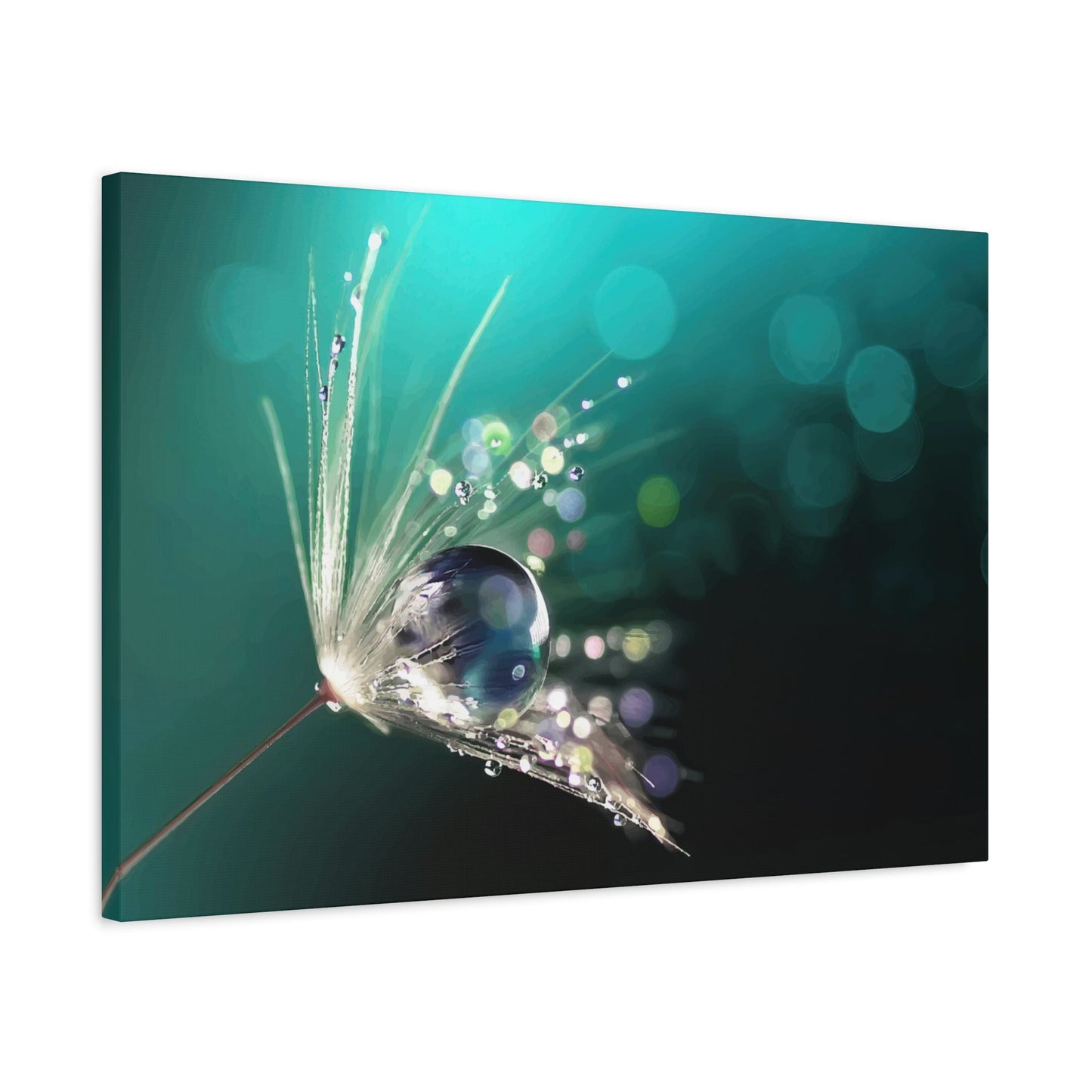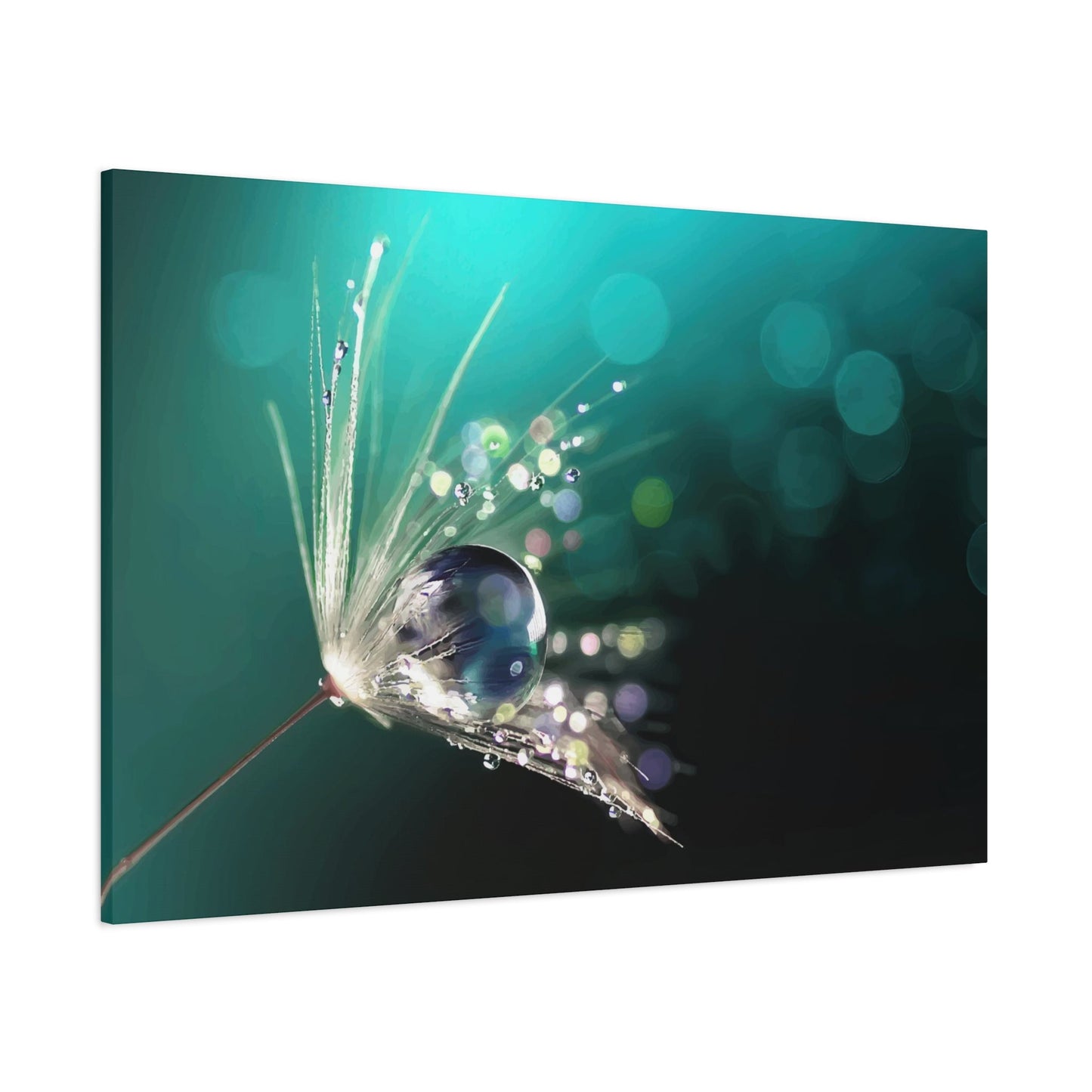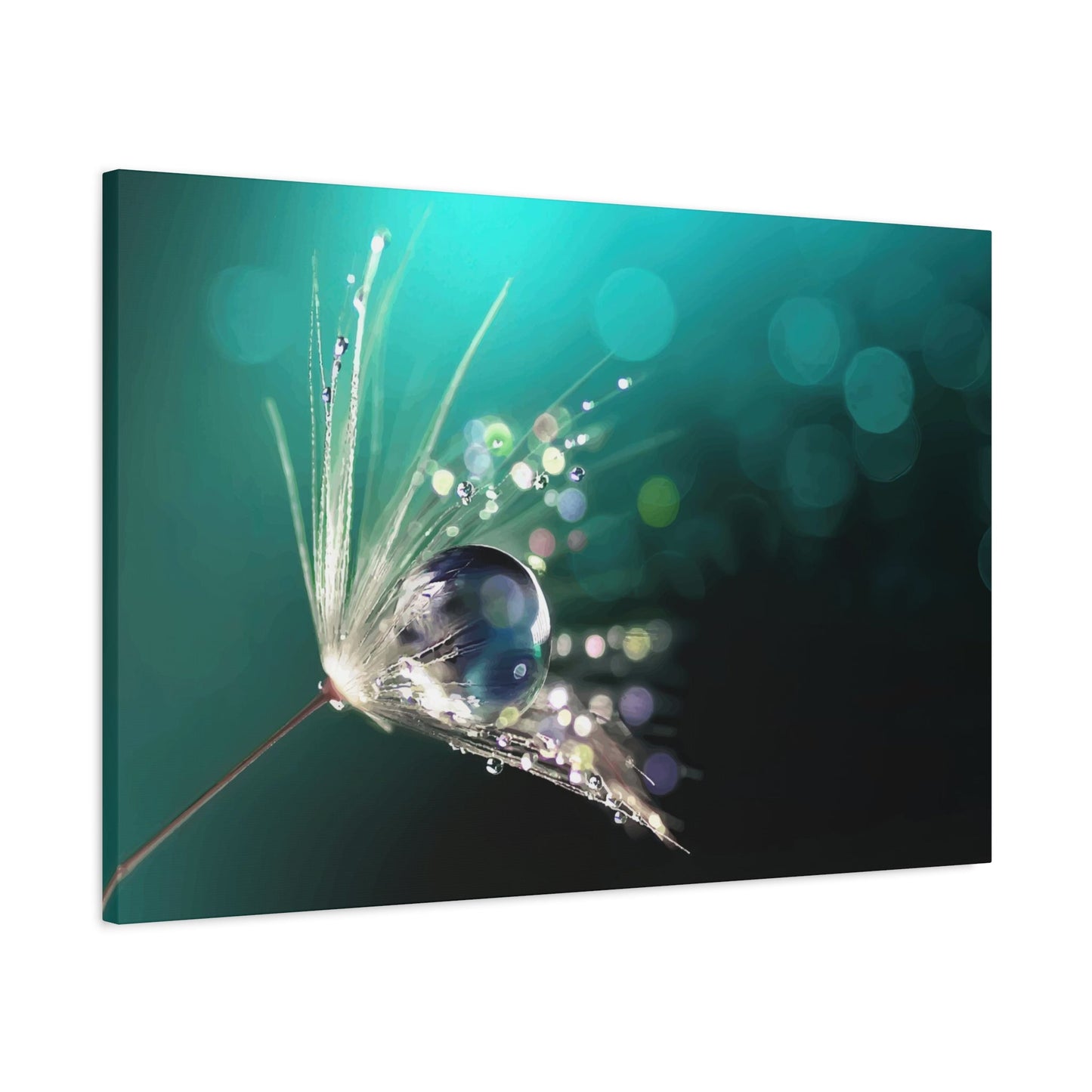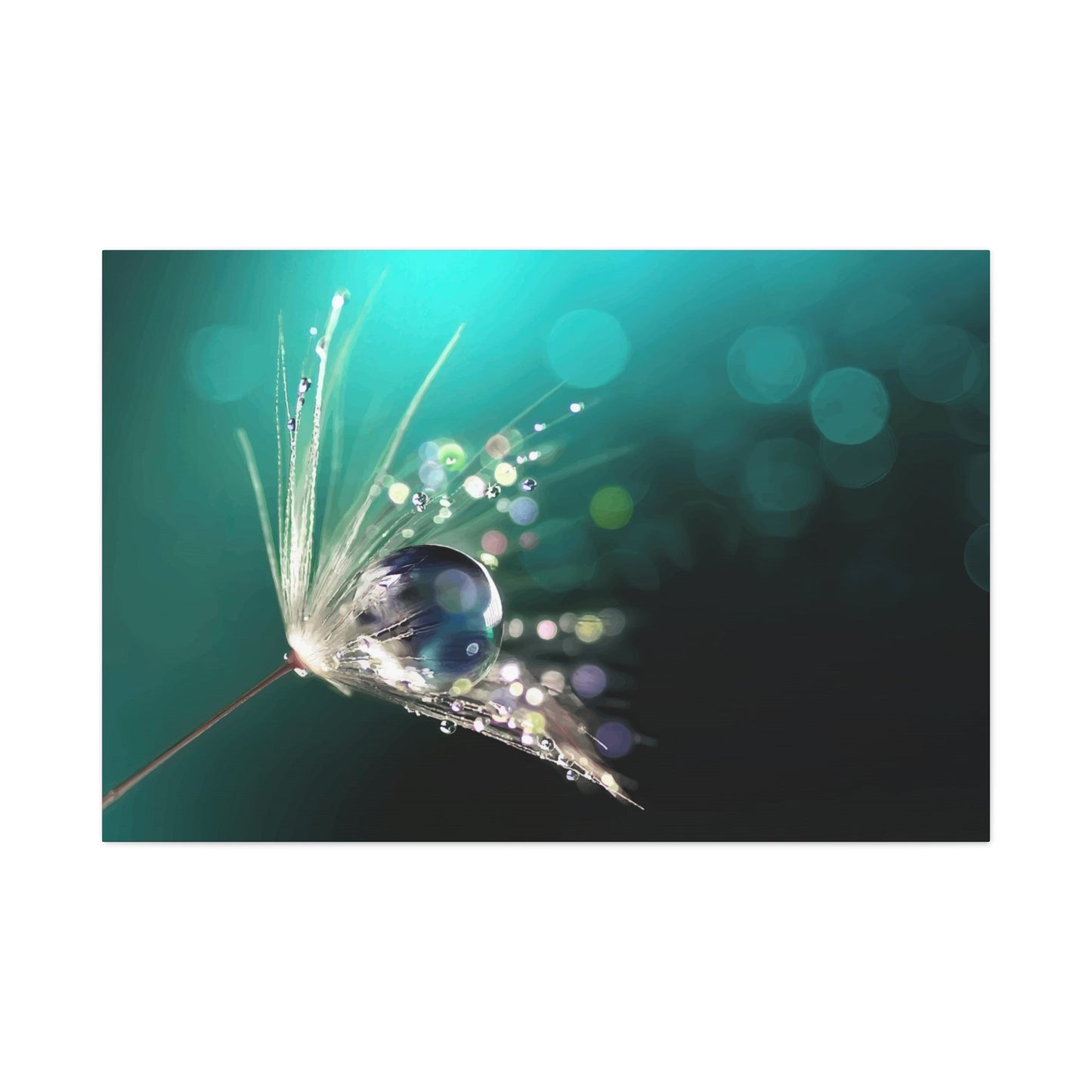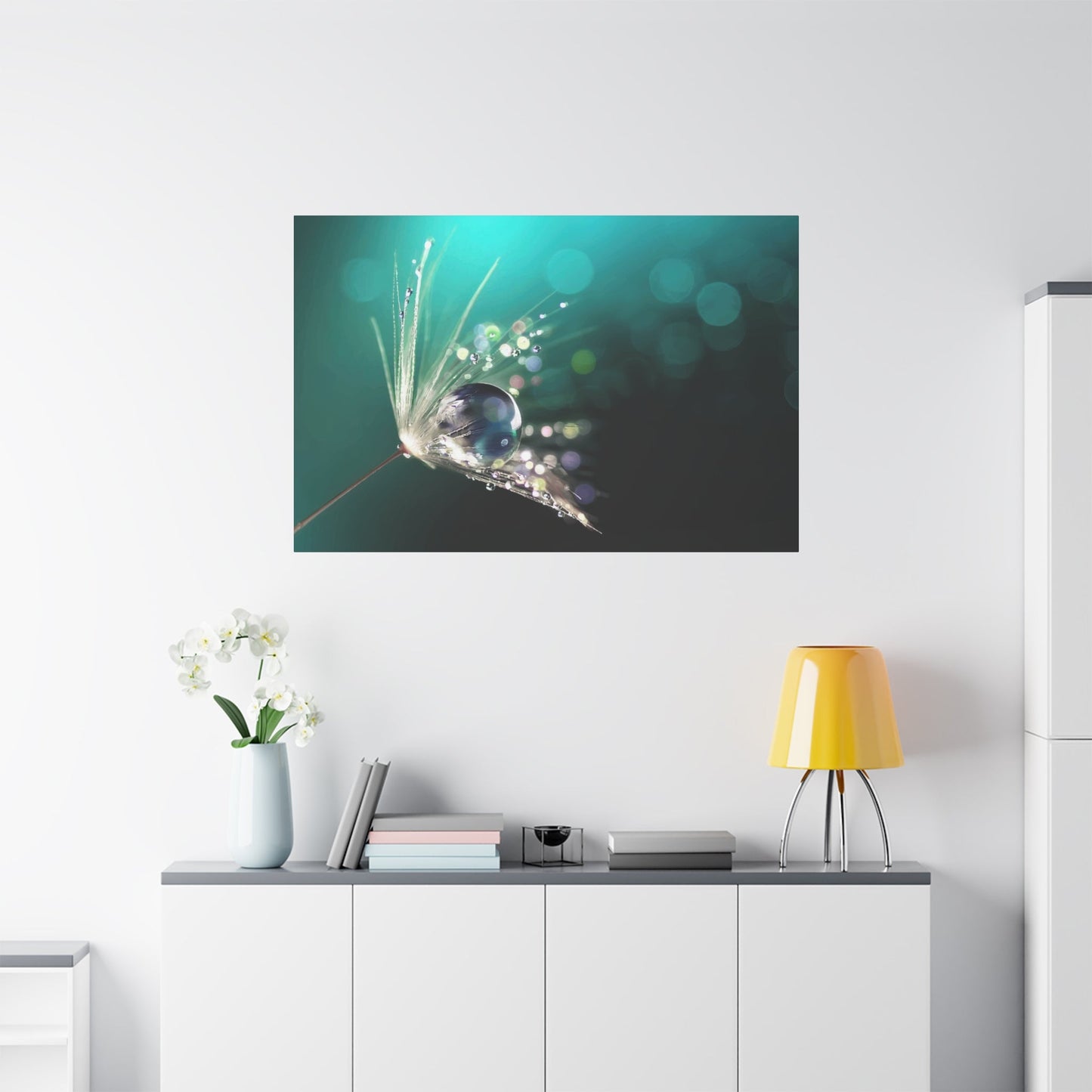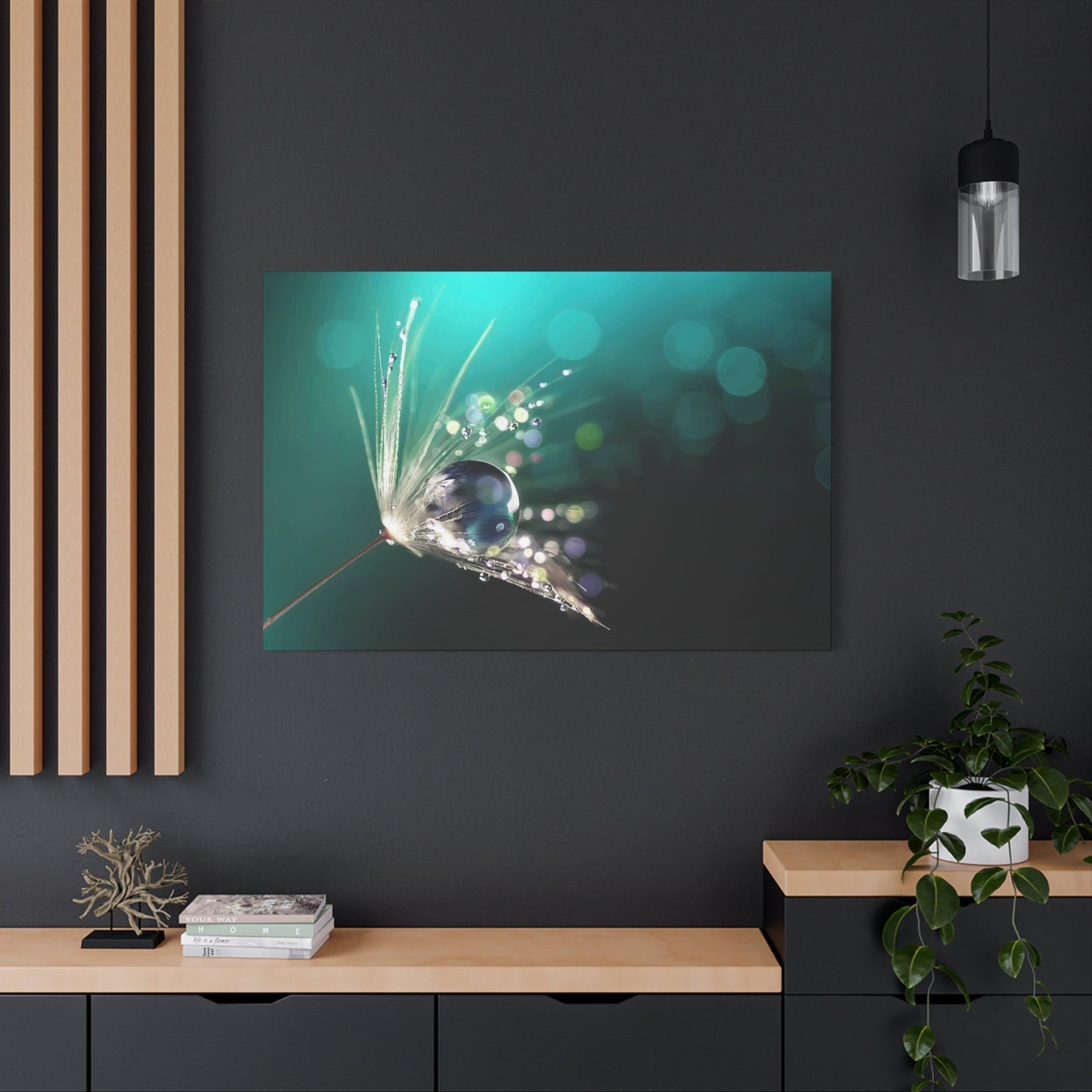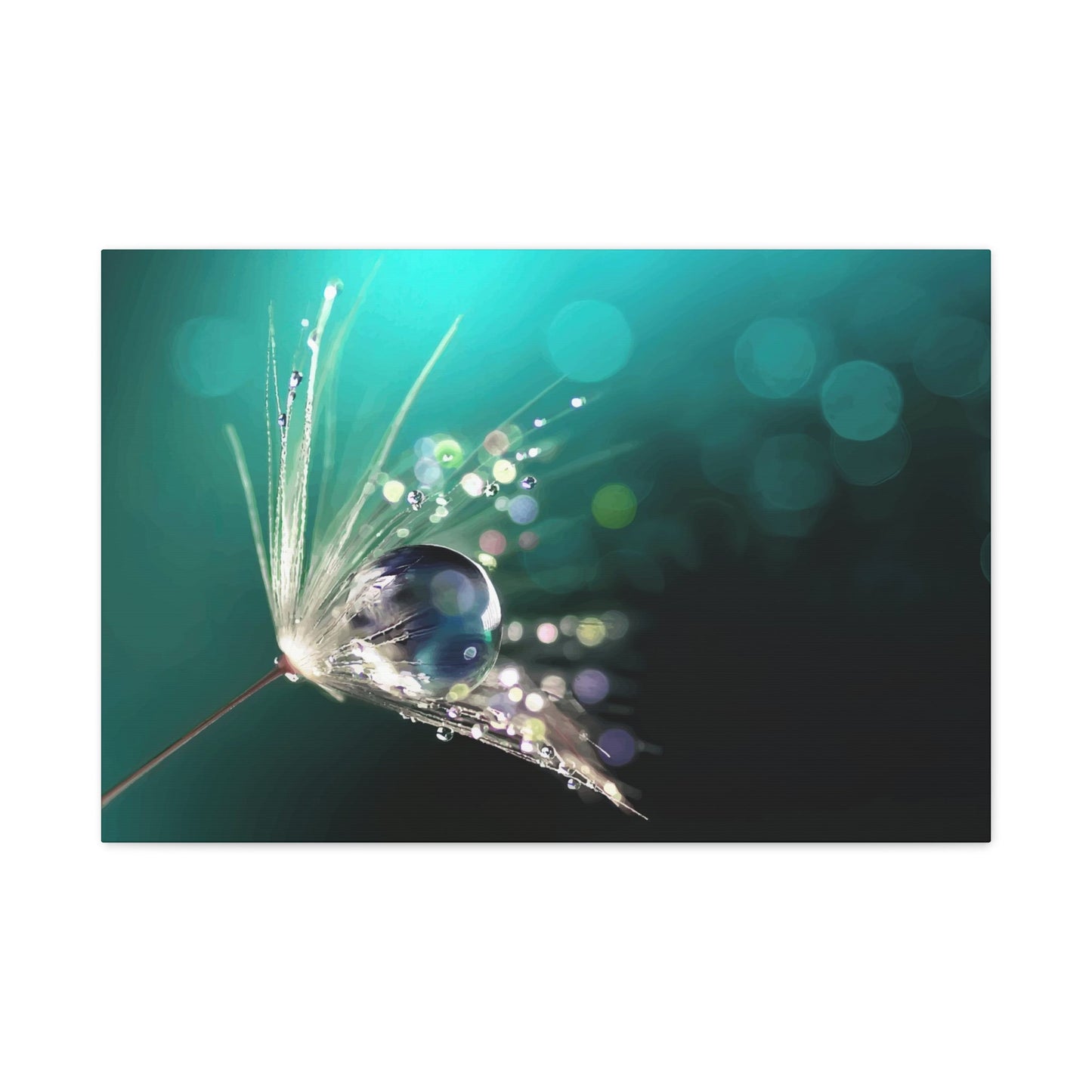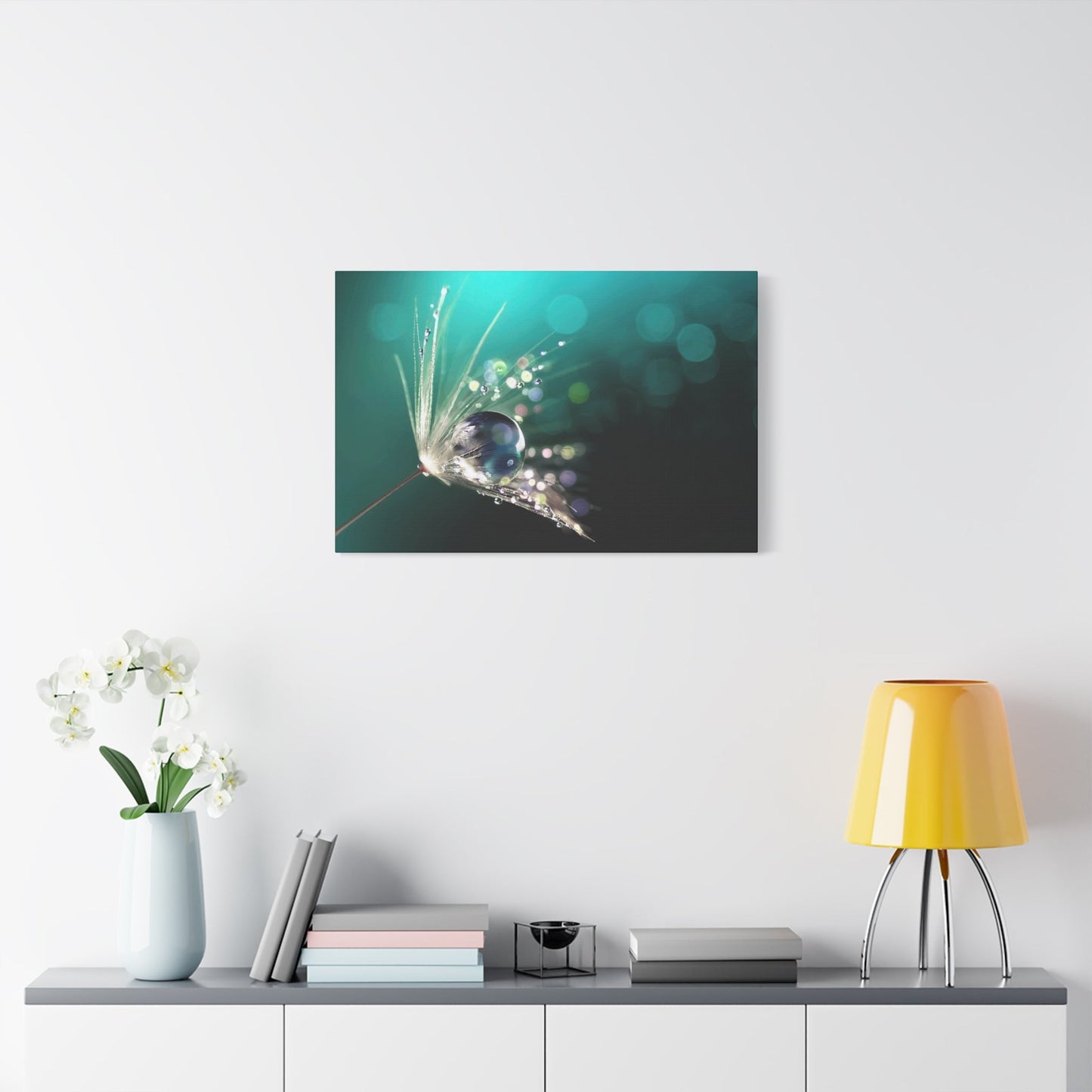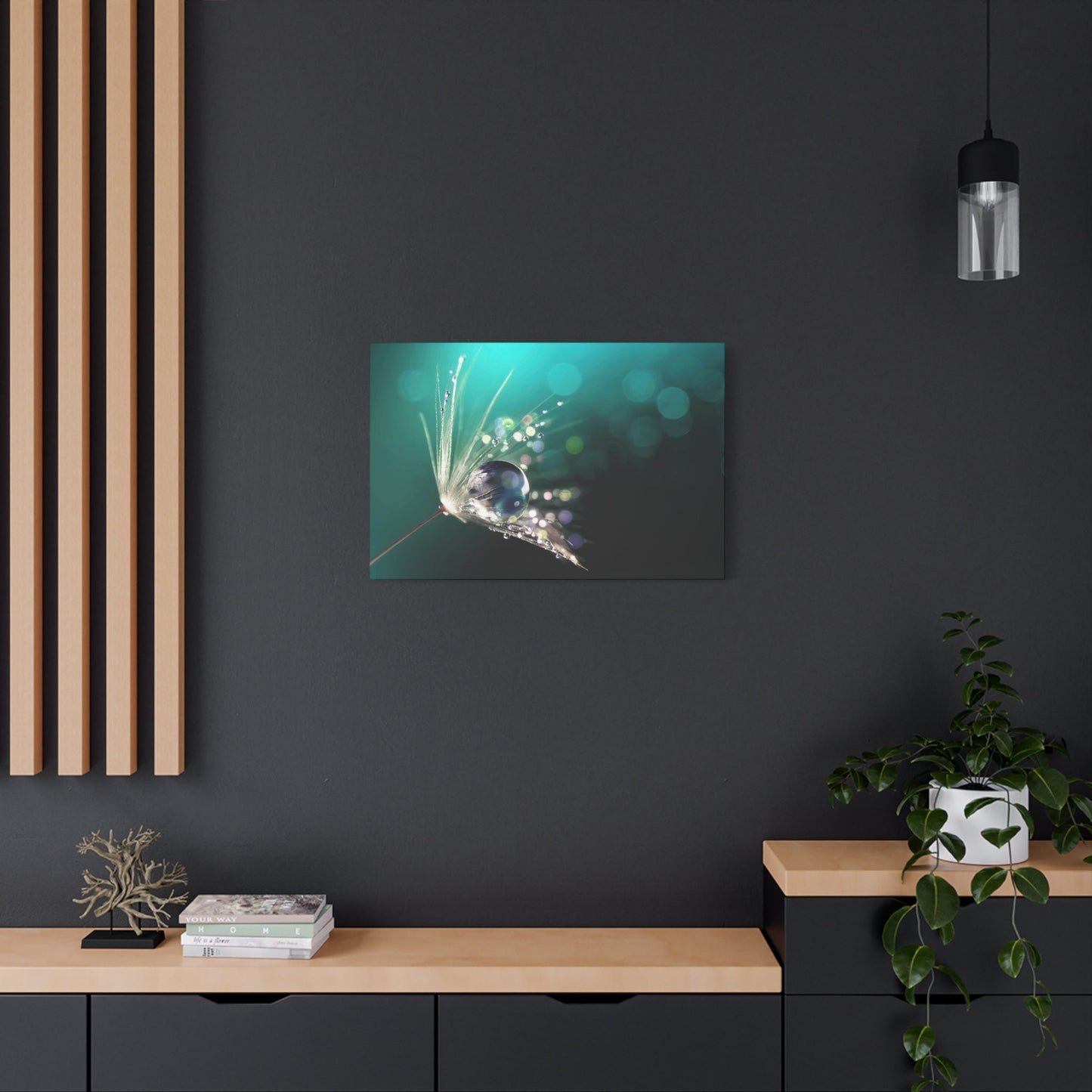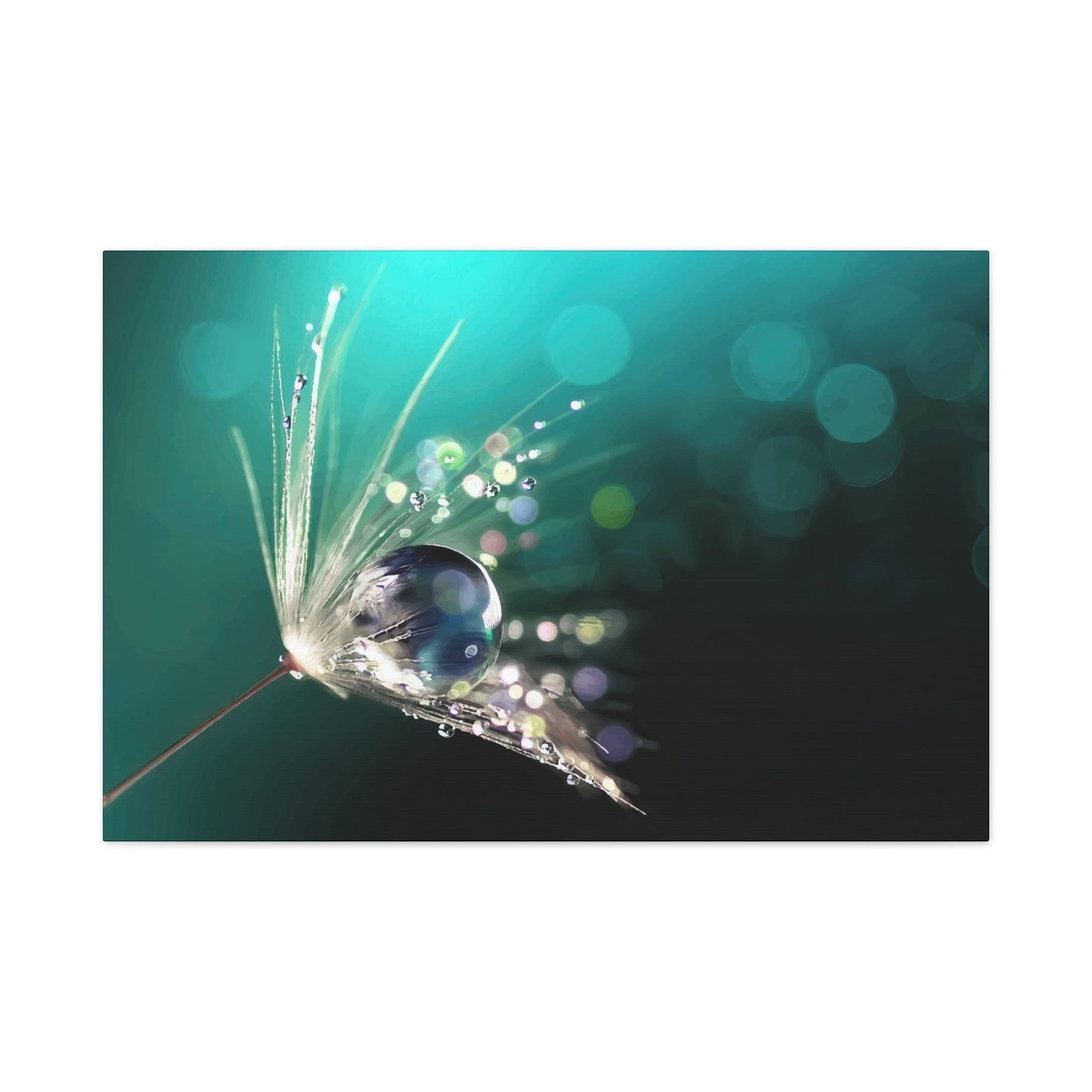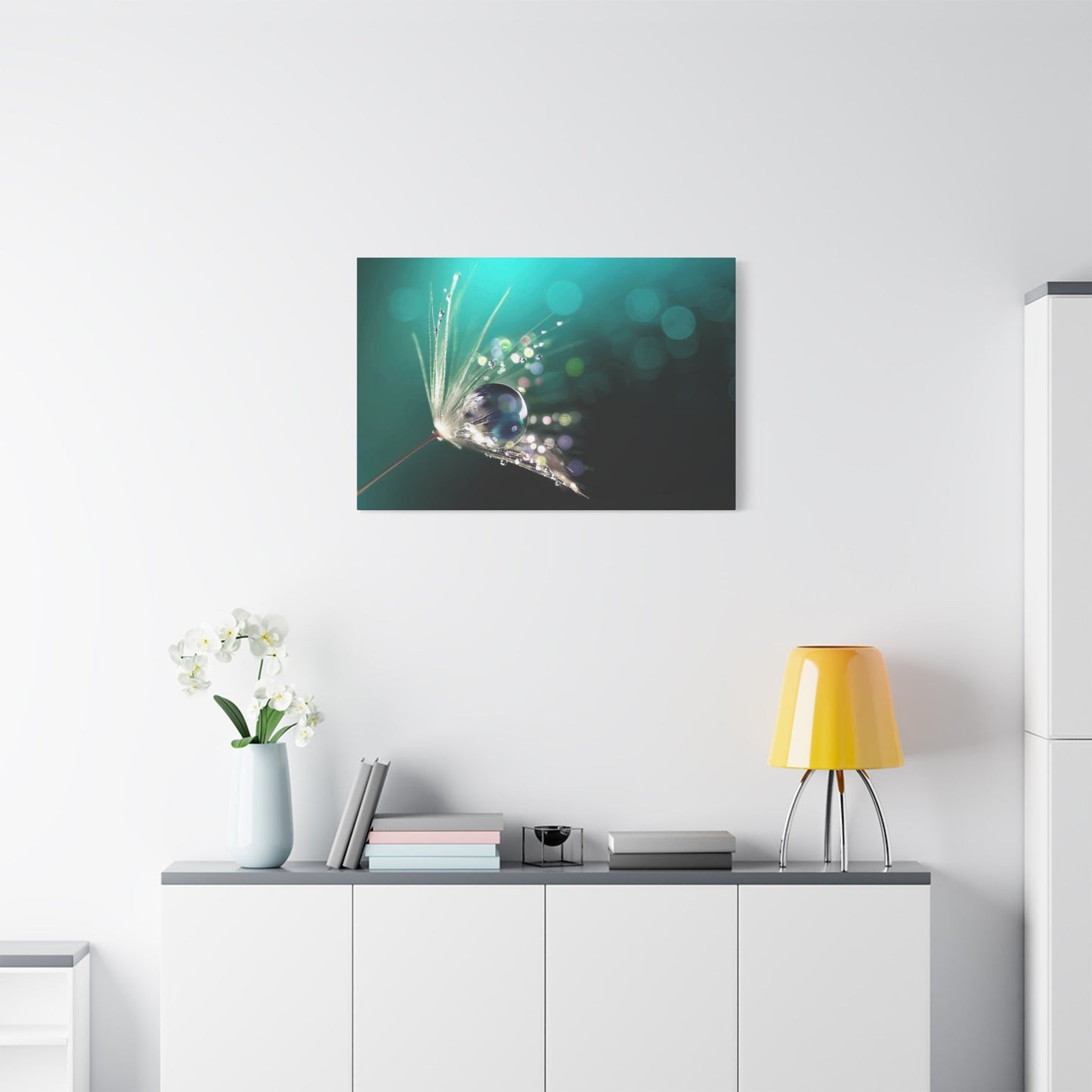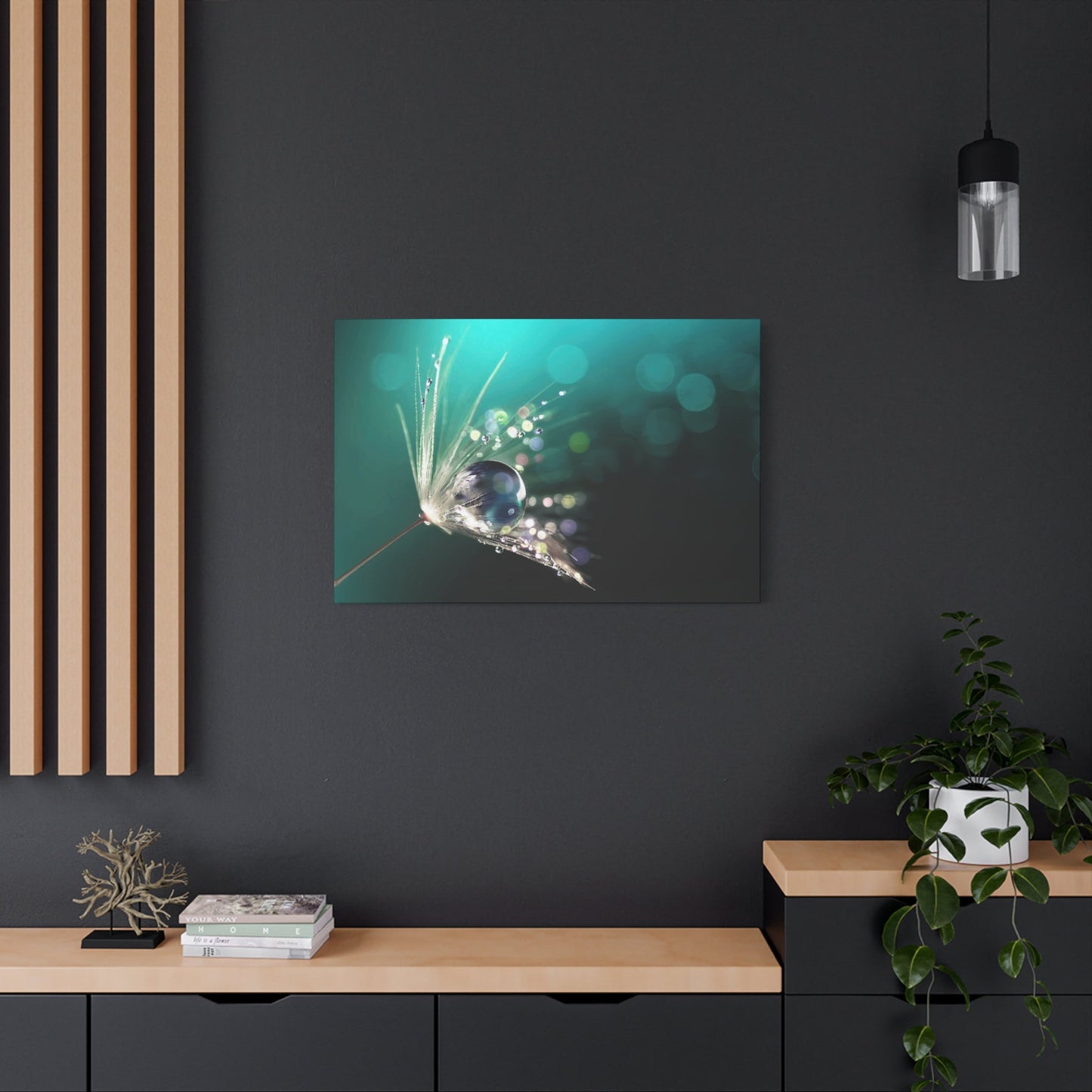Water Drops Wall Art: Serenity, Detail, and Nature in a Single Frames
Water has always held a special place in human consciousness, representing purity, renewal, and tranquility. When captured in artistic form, particularly through the delicate beauty of individual droplets, it transforms living spaces into sanctuaries of peace and visual interest. The incorporation of droplet-themed visual Drops Art into residential and commercial environments has become increasingly popular among interior design enthusiasts who seek to create atmospheres that promote relaxation and mental clarity. These artistic representations bring the essence of nature's most fundamental element directly into our daily surroundings, offering both aesthetic appeal and emotional benefits that extend far beyond simple decoration.
The visual representation of liquid elements in their most concentrated form has fascinated artists, photographers, and designers for generations. Each droplet captures light in unique ways, creating prismatic effects that can transform ordinary spaces into extraordinary environments. The reflective properties inherent in these natural formations make them ideal subjects for artistic interpretation, whether rendered through photography, painting, digital art, or sculptural installations. This comprehensive exploration examines how these elemental Drops Art can revolutionize interior spaces while providing practical guidance for incorporating them effectively into various residential and commercial settings.
The Therapeutic Influence of Droplet-Themed Visual Drops Art
The psychological impact of incorporating liquid-inspired artwork into living environments cannot be overstated. Research in environmental psychology has consistently demonstrated that visual elements connected to natural phenomena significantly reduce stress levels and promote feelings of calmness. When individuals spend time in spaces adorned with imagery depicting crystalline droplets, they often report experiencing decreased anxiety and improved mental clarity. This phenomenon occurs because these images trigger subconscious associations with freshness, cleanliness, and the rejuvenating qualities we naturally associate with rainfall, morning dew, and pristine mountain streams.
The therapeutic benefits extend beyond simple visual pleasure. Medical facilities, wellness centers, and therapeutic environments increasingly incorporate these Drops Art into their spaces specifically because of their proven calming effects on patients and clients. The gentle, organic shapes found in droplet formations create a visual rhythm that encourages slower breathing patterns and reduced heart rates. Unlike geometric patterns that can sometimes feel rigid or overwhelming, the natural curves and irregular formations found in liquid spheres provide visual interest without causing mental overstimulation.
Mental health professionals have observed that environments featuring these natural elements help create safe spaces where individuals feel more comfortable processing emotions and engaging in vulnerable conversations. The non-threatening, universally accessible imagery serves as a neutral backdrop that doesn't impose specific cultural or personal associations, making it ideal for diverse populations. The transparency and clarity associated with crystalline liquid forms also symbolically represent openness and honesty, qualities that therapeutic environments aim to cultivate.
Furthermore, the meditative quality inherent in contemplating these delicate formations encourages mindfulness practices. When individuals pause to truly observe the intricate details captured in such artwork, they engage in a form of active meditation that grounds them in the present moment. The complexity hidden within apparent simplicity invites deeper observation, revealing new details with each viewing and preventing the visual fatigue that can occur with less nuanced decorative elements.
Optimal Color Schemes for Liquid-Inspired Visual Drops Art
Color selection profoundly influences how droplet artwork integrates with and affects its environment. Cool blue tones naturally dominate many liquid-inspired Drops Art, creating immediate associations with freshness, cleanliness, and tranquility. These cooler hues have documented psychological effects, including lowered blood pressure and reduced feelings of stress. Spaces decorated predominantly with blue-toned droplet imagery often feel more spacious and airy than identical rooms using warmer color schemes. The psychological associations with sky and sea embedded in blue hues create subconscious connections to vast, open natural environments even within enclosed spaces.
Green-tinted compositions featuring droplets on leaves, grass, or other vegetation introduce additional layers of natural connection. The combination of liquid and botanical elements creates compound calming effects, as both independently possess stress-reducing properties. These verdant palettes work exceptionally well in spaces meant to serve as refuges from urban environments, bringing suggestions of forests, gardens, and other green spaces into the interior realm. The life-affirming associations of green hues complement the renewal symbolism of liquid imagery, creating thematically rich combinations.
Surprisingly, warmer tones can also work beautifully in droplet compositions when thoughtfully employed. Golden hour photography capturing droplets backlit by sunrise or sunset introduces amber, copper, and rose hues that warm spaces while maintaining connection to natural phenomena. These warmer interpretations work particularly well in rooms with northern exposures or spaces that might otherwise feel cold. The unexpected warmth in typically cool subject matter creates visual interest through the tension between expected and actual color presentation.
Monochromatic approaches utilizing exclusively grayscale tones emphasize form, contrast, and texture over chromatic impact. These restrained palettes feel sophisticated and timeless, unlikely to fall victim to changing color trends. The neutral nature of black and white imagery makes it supremely versatile, working with virtually any existing color scheme without risk of clashing. The emphasis on tonal gradation in monochromatic work highlights the sculptural qualities of droplet forms, drawing attention to shape and light behavior rather than surface color.
Iridescent and prismatic presentations capturing the rainbow refractions visible in certain droplet formations introduce full-spectrum color in controlled doses. These more vibrant compositions serve as focal points, drawing the eye and creating energy within otherwise subdued spaces. The scientific accuracy of depicting actual light behavior through liquid spheres gives these more colorful presentations legitimacy beyond mere decorative excess. Understanding that these rainbow effects genuinely occur in nature rather than representing artistic embellishment helps them maintain connection to the authenticity that makes droplet imagery appealing in the first place.
Establishing Zen Environments Through Droplet-Inspired Drops Art
The philosophy underlying Zen aesthetic principles finds natural expression through carefully selected droplet imagery. The emphasis on simplicity, natural materials, and mindful observation central to Zen practice aligns perfectly with the contemplative nature of droplet-focused compositions. Creating dedicated meditation or quiet reflection spaces benefits enormously from the inclusion of these calming visual elements that support rather than distract from interior contemplation. The non-demanding nature of droplet imagery allows it to exist in peripheral awareness without commanding attention, yet rewards focused observation when deliberately examined.
Spatial arrangement plays crucial roles in Zen-inspired environments. Droplet artwork should occupy thoughtfully selected positions where it can be viewed during meditation or quiet sitting without requiring uncomfortable positioning or neck strain. Eye-level placement when seated matches the primary viewing posture used during meditation practice, ensuring the artwork remains accessible during actual use rather than serving merely as decorative elements noticed only in passing. The intentional positioning of visual elements reflects the broader Zen principle of purposeful, considered arrangement of all environmental components.
Pairing droplet Drops Art with other natural elements creates layered experiences that deepen the connection to organic principles. Living plants, natural wood furniture, stone elements, and other materials drawn from nature complement liquid imagery through material diversity while maintaining thematic consistency. The combination of living and represented natural elements creates richer environmental experiences than either could achieve independently. The interplay between actual and depicted natural phenomena adds depth to spaces without requiring extensive square footage or complex design schemes.
Lighting considerations become particularly important in Zen-oriented spaces featuring droplet artwork. Natural light sources are preferable when possible, as the changing quality of sunlight throughout the day creates dynamic viewing experiences that connect room occupants to natural cycles. The way morning light interacts with droplet imagery differs substantially from afternoon or evening illumination, creating subtle variations that prevent the visual stagnation that can occur with unchanging artificial lighting. When natural light is insufficient or unavailable, warm, diffused artificial sources should provide illumination that doesn't create harsh contrasts or glare on artwork surfaces.
Comparing Realistic and Abstract Liquid Formation Drops Art
The choice between photorealistic and abstract interpretations of droplet themes significantly impacts the character and function of the artwork within a space. Highly realistic photography or hyper-realistic painting captures liquid formations with scientific precision, celebrating the actual physical beauty of these natural phenomena. The detailed rendering of reflections, refractions, surface tension effects, and light behavior creates images that reward close examination. These realistic presentations appeal to viewers who appreciate the intersection of art and science, finding beauty in accurate representation of observable reality. The educational component inherent in realistic depictions adds intellectual interest that extends beyond pure aesthetic appreciation.
Abstract interpretations liberate artists from the constraints of literal representation, allowing exploration of concepts, emotions, and impressions suggested by liquid forms rather than their exact appearance. Stylized droplets might be reduced to essential shapes, rendered in unexpected colors, or combined with other elements in ways that wouldn't occur naturally. These creative liberties enable artwork that captures the essence or feeling of liquid phenomena without being bound by physical accuracy. Abstract approaches often create more room for personal interpretation, allowing viewers to project their own meanings and associations onto the imagery.
The decision between realistic and abstract styles should consider the primary purpose the artwork serves within the space. Environments emphasizing education, scientific inquiry, or connection to observable nature benefit from realistic presentations that celebrate the actual appearance of these formations. Conversely, spaces focused on emotional experience, creative thinking, or personal expression might better serve by abstract interpretations that operate more on feeling than literal representation. The psychological demands placed on viewers differ substantially between these approaches, with realistic work requiring recognition and appreciation while abstract work invites interpretation and personal meaning-making.
Strategies for Displaying Droplet Drops Art in Compact Spaces
Limited square footage presents specific challenges when incorporating artwork, but droplet imagery offers particular advantages for small spaces. The inherently simple compositions typical of droplet-focused Drops Art work well in confined areas where complex, busy artwork might feel overwhelming. A single, well-chosen piece featuring a pristine droplet on an uncluttered background can serve as a focal point that actually makes a small room feel larger rather than more cramped. The minimalist nature of effective droplet imagery aligns naturally with the design restraint necessary for successful small-space decoration.
Vertical orientation takes advantage of wall height rather than competing for limited horizontal space. Tall, narrow presentations draw the eye upward, creating the illusion of greater ceiling height while using minimal lateral wall area. This vertical emphasis works particularly well in small bathrooms, narrow hallways, or compact home offices where horizontal space is at a premium. The natural tendency of liquid to flow downward makes vertical compositions feel thematically appropriate for droplet imagery, creating harmony between subject matter and presentation format.
Light colors and bright compositions help reflect available light in small spaces, combating the darkness that can make compact rooms feel even smaller. Droplet imagery featuring white or pale backgrounds, or capturing droplets against bright skies, bounces light around the room rather than absorbing it. This reflective quality creates a sense of airiness and openness that psychologically expands the perceived size of the space. The association of bright droplet imagery with cleanliness and freshness also helps small spaces feel less claustrophobic by suggesting purity and uncluttered simplicity.
Multi-panel approaches, carefully scaled to the available space, create visual interest without requiring large single pieces that might overwhelm compact areas. Two or three coordinated smaller panels arranged in thoughtful composition distribute visual weight across the wall while maintaining connection through repeated subject matter or coordinated color schemes. This approach provides the impact of a more substantial installation while maintaining the flexibility to work around obstacles like switches, thermostats, or architectural features that often complicate wall arrangements in small spaces.
Strategic placement near natural light sources, when available, allows the artwork to benefit from changing illumination throughout the day. This creates dynamic viewing experiences that prevent the static feeling that can plague small spaces with limited design possibilities. The interaction between natural light and droplet imagery feels particularly appropriate given the subject matter, creating subtle environmental poetry as real sunlight illuminates depicted liquid forms. In spaces without natural light, carefully positioned accent lighting can create similar effects, adding dimension to the artwork while contributing to overall ambient illumination.
Photography-Focused Droplet Imagery Worth Collecting
The technical challenges inherent in capturing high-quality droplet photography ensure that successful images represent significant artistic and technical achievement. Macro photography revealing microscopic details invisible to casual observation transforms ordinary droplets into entire worlds worthy of close study. The equipment, timing, and expertise required to freeze the perfect moment of droplet formation, impact, or suspension creates genuine rarity that gives photographic artwork inherent value beyond simple decorative appeal. Collectors increasingly recognize that exceptional droplet photography represents a legitimate art form demanding respect alongside more traditional artistic media.
Sequential splash photography capturing the millisecond-by-millisecond progression of droplet impact creates dynamic narratives within single frames or coordinated series. These action sequences reveal the physics of liquid behavior in ways impossible to perceive in real-time observation. The sculptural forms created during droplet collisions form temporary structures that exist for such brief moments that photography provides the only practical means of documenting their beauty. The scientific value of these images complements their artistic merit, making them particularly suitable for educational environments or spaces occupied by intellectually curious individuals.
Environmental droplet photography situating liquid formations within broader natural contexts tells richer stories than isolated close-ups. Morning dew adorning spider webs, raindrops collecting on flower petals, or condensation forming on autumn leaves all provide narrative frameworks that give individual droplets meaning beyond their isolated beauty. These contextual presentations create stronger emotional connections by grounding abstract liquid forms within familiar natural scenarios. The combination of recognizable settings with the often-overlooked miracle of individual droplet formation encourages viewers to notice similar beauty in their own encounters with nature.
Drops Art That Comfort: Liquid Elements in Residential Styling
Interior design increasingly recognizes the psychological importance of environmental influences on emotional wellbeing. The incorporation of soothing visual elements, particularly those derived from natural phenomena, contributes to creating homes that function as true sanctuaries from external stressors. Droplet imagery serves this purpose exceptionally well through its universal associations with renewal, purity, and the gentler aspects of nature. Unlike potentially threatening natural imagery involving predators, storms, or wilderness, liquid formations present nature in its most benign and accessible form.
The strategic placement of calming artwork throughout a home creates a network of visual rest stops where eyes can pause during daily activities. These moments of aesthetic respite, however brief, accumulate to significantly impact overall stress levels and emotional state. Droplet Drops Art placed in high-traffic areas like hallways or near frequently used doorways ensure regular exposure that maximizes their calming influence. The subliminal effects of repeated viewing often exceed the impact of occasional deep engagement with artwork relegated to seldom-visited areas.
Color psychology principles should guide selection and placement decisions throughout the home. Cool-toned droplet imagery in bedrooms supports the relaxation necessary for quality sleep, while slightly more energetic interpretations in living areas maintain appropriate activation levels for social interaction and daily activities. Understanding how different presentations affect mood and energy allows for nuanced design choices that support the specific functions of each space. This thoughtful approach transforms artwork from mere decoration into functional environmental elements that actively contribute to quality of life.
Coordinated collections maintaining thematic consistency while varying in scale, composition, or color emphasis create visual journeys throughout the home. This curated approach demonstrates intentionality that elevates overall design sophistication. Moving from room to room reveals new interpretations of familiar themes, maintaining interest while building a coherent design narrative. The repetition of droplet motifs creates rhythmic visual patterns that unify disparate spaces into a cohesive whole, particularly valuable in open-concept layouts where traditional room divisions don't exist.
Presentation Techniques for Liquid-Inspired Drops Art
The frame surrounding artwork significantly influences how the piece integrates with its environment and the impact it makes on viewers. For droplet imagery, frame selection should generally defer to the artwork itself rather than competing for attention. Simple, clean-lined frames in neutral colors maintain focus on the depicted liquid formations while providing the structural presentation artwork requires. The restraint in frame selection reflects and reinforces the minimalist simplicity characteristic of effective droplet compositions.
Floating frames that suspend artwork slightly away from the wall create shadow effects that add dimension and visual interest. This subtle three-dimensionality suits liquid imagery particularly well, as the physical depth created by floating frames metaphorically echoes the dimensional qualities of actual droplets. The sophisticated appearance of floating presentations elevates artwork beyond basic decoration, signaling that the pieces merit careful attention and appreciation. The contemporary aesthetic of floating frames aligns naturally with the modern sensibility prevalent in much droplet-focused design.
Material choices for frames should complement rather than contrast with the subject matter. Natural wood frames in light finishes create organic warmth that enhances the natural origins of droplet imagery without introducing jarring stylistic conflicts. The grain and texture of wood adds subtle visual interest that enriches minimalist compositions without overwhelming them. Metal frames in silver, chrome, or brushed finishes offer more contemporary alternatives that suit modern spaces while maintaining the cool, crisp feeling appropriate to liquid themes.
Matting decisions significantly impact the relationship between artwork and frame. Generous white or off-white matting creates breathing room around the image, allowing the depicted droplets to float within an undefined space that emphasizes their isolation and purity. This negative space intensifies focus on the droplet itself by removing contextual distractions. Conversely, minimal or absent matting creates more intimate relationships between image and frame, appropriate when the artwork itself contains sufficient negative space that additional buffering isn't necessary.
Gallery walls combining multiple droplet pieces require careful planning to maintain visual harmony while avoiding monotony. Mixing sizes, orientations, and specific compositions within a consistent theme creates dynamic arrangements that reward extended viewing. The spacing between pieces should allow each to maintain individual identity while clearly participating in the larger whole. Alignment strategies, whether strictly geometric or more organic, should reflect the overall design philosophy of the space and the character of the individual pieces being arranged.
Introducing Outdoor Elements Through Liquid-Themed Drops Art
Modern urban living often separates individuals from regular contact with natural environments, creating psychological deficits that manifest as stress, anxiety, and general malaise. Bringing natural imagery indoors helps bridge this gap, providing visual connection to outdoor environments even when physical access is limited. Droplet artwork serves this biophilic purpose excellently, offering concentrated doses of nature's beauty without requiring the space, maintenance, or specific conditions living plants demand. For individuals with limited outdoor access or those living in particularly urban environments, these visual connections become crucial components of psychological wellbeing.
The specific natural contexts depicted in droplet photography or painting influence the type of natural connection created. Droplets on forest foliage evoke woodland environments, while those on ocean-sprayed surfaces suggest coastal settings. Desert rain droplets carry different associations than tropical downpour imagery. Understanding these contextual variations allows for intentional selection of artwork that connects residents with the specific natural environments they find most personally meaningful or restorative. This personalization transforms generic nature appreciation into specifically meaningful environmental connections.
Seasonal specificity in droplet imagery allows for rotation that mirrors natural cycles, maintaining awareness of temporal progression even in climate-controlled interiors. Spring rain imagery, summer morning dew, autumn condensation, and winter frost or ice formations each carry distinct seasonal associations that help maintain connection to natural rhythms. This seasonal awareness, even when artificially maintained through artwork rotation, helps combat the temporal disorientation that can occur in modern life with its artificial lighting, climate control, and reduced dependence on weather conditions.
The scale at which natural phenomena are depicted influences the type of connection viewers experience. Macro photography that enlarges droplets to occupy entire frames creates intimate encounters with details typically overlooked, encouraging appreciation for small-scale natural beauty. This microscopic perspective can inspire viewers to notice similar details in their own encounters with nature, enhancing their observational skills and deepening their general nature appreciation. Conversely, broader views showing droplets as elements within larger natural scenes emphasize ecosystem interconnections and the role of liquid in supporting plant and animal life.
Combining droplet imagery with actual natural elements like living plants, natural stone features, or water installations creates multi-sensory natural environments that exceed what any single element could achieve alone. The visual representation complements the physical presence of natural materials, while the living elements add dimensions of change, growth, and authentic biological presence that static artwork cannot provide. These layered approaches create the richest possible natural connections within built environments, supporting both psychological wellbeing and aesthetic satisfaction.
Liquid Formation Drops Art for Wellness-Oriented Interiors
The growing wellness industry increasingly recognizes environmental design as crucial to creating therapeutic atmospheres. Spas, meditation centers, yoga studios, and wellness facilities consistently incorporate natural imagery to support their healing and relaxation missions. Droplet Drops Art align perfectly with these objectives through their associations with cleanliness, renewal, and natural processes. The visual language of these Drops Art communicates calm and purity without requiring verbal explanation, making them universally accessible regardless of language or cultural background.
Professional therapeutic environments benefit particularly from artwork that doesn't impose specific emotional narratives or cultural assumptions. Droplet imagery provides neutral visual interest that supports relaxation without directing thoughts toward particular themes or stories that might not resonate with all clients. This universal accessibility makes these Drops Art practical choices for diverse clientele spanning different backgrounds, beliefs, and therapeutic needs. The non-denominational nature of natural imagery avoids potential discomfort that culturally specific Drops Art might create for some individuals.
The chromotherapy principles used in some wellness practices inform color selection for droplet artwork in these settings. Cool blues and greens promote relaxation and reduce anxiety, making them appropriate for waiting areas and treatment rooms focused on stress reduction. Warmer tones energize and invigorate, potentially suitable for fitness areas or spaces dedicated to active practices like dynamic yoga styles. Understanding these color psychology principles allows for strategic artwork placement that supports specific therapeutic objectives in different areas of wellness facilities.
Moisture resistance becomes practically important in spa environments where humidity levels regularly reach levels that would damage many art materials. Metal prints, sealed canvas, and properly treated materials ensure longevity in these challenging conditions while maintaining visual impact. The practical durability of appropriate materials prevents the deterioration that would compromise both aesthetic appeal and financial investment. Selecting artwork specifically designed to withstand environmental challenges demonstrates the professionalism and attention to detail that clients expect from premium wellness facilities.
The sensory integration approach used in some therapeutic practices extends beyond visual elements to encompass sound, scent, and tactile experiences. Droplet artwork can anchor broader multi-sensory Drops Art that might include the sound of flowing water, fresh scents suggesting rain or ocean, and smooth stones or other natural materials that invite touch. This comprehensive sensory approach creates immersive environments that engage multiple perceptual channels simultaneously, deepening the therapeutic impact beyond what any single sensory element could achieve independently.
Ideal Locations for Displaying Liquid Formation Drops Art
While droplet imagery can theoretically work in any room, certain spaces benefit particularly from these specific design choices. Bathrooms represent the most obvious candidates, as discussed previously, but other rooms offer equally compelling opportunities. Bedrooms benefit enormously from the calming influence of these Drops Art, as the pre-sleep environment significantly impacts sleep quality. The peaceful associations of gentle droplet imagery help create the mental transition from waking activity to restful sleep, making them functionally valuable beyond mere decoration.
Home offices and workspaces might seem unlikely candidates, but the stress-reducing properties of natural imagery make droplet Drops Art strategically valuable in these potentially high-pressure environments. Brief visual breaks focusing on calming natural imagery have been shown to reduce cognitive fatigue and improve sustained concentration. Small pieces positioned near computer monitors provide opportunities for regular eye rest while the content of the imagery helps lower stress hormones that accumulate during demanding work sessions. The key is selecting pieces substantial enough to provide visual interest during brief breaks but not so compelling that they become distractions from necessary work.
Entryways and foyer spaces create first impressions that influence how visitors perceive the entire home. Droplet artwork in these transitional spaces immediately establishes a design aesthetic emphasizing natural elements, simplicity, and calm sophistication. The universal appeal of well-executed droplet imagery ensures that these first impressions register positively across diverse visitor populations. The neutral, non-controversial nature of these Drops Art avoids potential discomfort that more provocative or culturally specific artwork might create for some guests.
Living rooms and family gathering spaces benefit from artwork that enhances conversation and interaction rather than dominating attention or creating distraction. Droplet Drops Art provide sufficient visual interest to prevent bland emptiness while maintaining enough subtlety to avoid overwhelming social interaction. Larger-scale pieces can serve as focal points around which furniture arrangements naturally organize, helping define conversation areas in open-concept spaces. The flexibility of droplet imagery allows it to work equally well in formal entertaining spaces and casual family rooms, adapting to different social contexts without feeling out of place.
Kitchen environments increasingly incorporate artistic elements as these spaces evolve from purely functional work areas into social hubs where families and friends gather. Droplet imagery complements kitchen themes naturally through obvious connections between depicted liquid and the actual water used constantly in food preparation and cleanup. Moisture-resistant materials ensure longevity despite the challenging environment, while the fresh, clean associations of droplet imagery reinforce the hygiene essential to food preparation spaces. Positioning artwork away from direct cooking areas prevents damage while maintaining visual presence throughout the kitchen environment.
Coordinating Liquid Formations with Plant-Themed Drops Art
The natural occurrence of droplets on botanical subjects creates obvious synergies between these two design themes. Combining droplet-focused artwork with plant imagery creates richer natural environments than either theme could achieve independently. The complementary relationship between liquid sustaining plant life creates thematic coherence that feels intentional and sophisticated rather than random or accidental. This coordinated approach demonstrates design awareness that elevates overall aesthetic impact while maintaining the simplicity that makes both themes appealing.
Literal combinations showing droplets on leaves, flowers, or other plant surfaces provide the most direct integration of these themes. These compositions celebrate the interdependence of liquid and plant life while offering visual complexity through the interaction of different natural forms. The varied textures of plant surfaces affect how droplets rest and appear, creating diversity within consistent thematic frameworks. Photographic artwork capturing these moments combines both themes seamlessly, eliminating any need to separately coordinate disparate elements.
Gallery walls intermingling distinct droplet and botanical pieces allow for more flexibility in sourcing and arranging artwork. This approach permits independent selection of the strongest examples of each theme without requiring that they appear together in single compositions. The curatorial challenge becomes arranging these separate pieces in ways that create visual conversations between them, positioning droplet and plant imagery in proximity that encourages viewers to notice thematic relationships. Varying sizes, orientations, and frames while maintaining consistent color palettes helps unify collections of diverse pieces.
Three-dimensional elements add tactile dimension to predominantly two-dimensional collections. Living plants placed near droplet artwork create dialogue between representation and reality, with actual botanical specimens commenting on depicted ones. The living plants add dimensions of growth, change, and authentic biological presence that static artwork cannot provide, while the artwork contributes permanent visual interest unaffected by seasonal changes or occasional plant casualties. This combination creates resilient design schemes that maintain appeal even when living elements temporarily struggle.
Color coordination between droplet and botanical artwork determines whether the combination feels harmonious or chaotic. Maintaining consistent green tones throughout plant imagery while limiting droplet pieces to blues and whites creates color discipline that unifies diverse pieces. Alternatively, allowing more chromatic range but maintaining consistent saturation levels and tonal values creates cohesion through different means. Understanding color theory principles allows for intentional coordination that feels effortless rather than forced, suggesting natural affinity between elements rather than artificial imposition of relationships.
Innovative Mediums for Liquid Formation Visual Drops Art
Traditional canvas and paper prints represent just the beginning of material possibilities for droplet artwork. Innovative materials expand creative options while introducing unique aesthetic qualities impossible with conventional media. Metal prints using dye-sublimation processes create luminous images that seem to generate internal light. The reflective properties of metal surfaces particularly complement liquid subject matter, as both share qualities of light interaction and reflective beauty. The contemporary aesthetic of metal prints suits modern interiors while the material's durability makes it practical for challenging environments including bathrooms and kitchens.
Acrylic face-mounting creates stunning depth and dimensional presence through layers of transparent material sandwiching the printed image. Light passing through the acrylic creates optical effects that enhance color saturation and create the illusion of viewing three-dimensional objects rather than flat representations. The glass-like surface quality of acrylic creates premium, gallery-worthy presentations that elevate any space. The substantial physical presence of acrylic-mounted work makes these pieces focal points commanding attention and conveying importance.
Wood-mounted prints bring natural warmth to liquid themes that might otherwise feel cool or clinical. The visible wood grain creates interesting texture that adds organic interest without competing with the primary image. Lightweight wood panels allow for large-scale presentations without the weight challenges solid wood would present. The sustainable forestry practices now standard in art materials also make wood mounting an environmentally conscious choice for ecologically aware consumers. The natural material creates philosophical alignment between subject matter drawn from nature and presentation materials sourced from natural resources.
Fabric-based presentations including canvas, tapestry, and specialty textiles introduce softness and acoustic properties traditional rigid materials lack. The tactile appeal of fabric invites touch in ways that glass or acrylic discourages, creating more approachable, intimate relationships between viewer and artwork. The sound-dampening qualities of textile materials provide functional benefits in spaces where acoustic control contributes to comfort and usability. Bedrooms, meditation spaces, and home theaters all benefit from these acoustic properties alongside the visual interest fabric artwork provides.
Experimental materials continue emerging as artists and manufacturers explore new possibilities. Bamboo panels, recycled materials, cork, and other alternative substrates each bring unique aesthetic qualities and practical characteristics. These innovative approaches appeal to individuals seeking distinctive presentations that stand apart from mainstream offerings. The environmental stories behind many alternative materials add ethical dimensions that resonate with consumers increasingly concerned about sustainability and responsible consumption. These materials transform artwork acquisition from purely aesthetic decisions into statements of values and priorities.
Creating Bathroom Retreats with Droplet-Focused Drops Art
Bathrooms increasingly function as personal spa environments rather than purely utilitarian spaces. This evolution toward wellness-oriented design makes artistic choices particularly important in defining the bathroom experience. Droplet artwork enhances spa-like qualities through obvious thematic connections between depicted liquid and the room's primary functions. The visual reinforcement of cleanliness, purity, and renewal supports the psychological experience of bathing and personal care rituals, transforming routine maintenance into mindful self-care practices.
Storage and space constraints typical of bathrooms require creative solutions for artwork incorporation. Vertical spaces above towel bars, between fixtures, or flanking mirrors often go unused despite their display potential. Properly scaled droplet prints in these locations add visual interest without consuming precious wall space needed for functional elements. The narrow vertical formats often necessary for bathroom display actually suit droplet imagery well, as the natural tendency of liquid to flow downward makes vertical compositions feel thematically appropriate.
Moisture management remains crucial for artwork longevity in bathroom environments. Proper ventilation, strategic positioning away from direct shower spray, and selection of moisture-resistant materials prevent damage that would compromise both appearance and investment. Metal prints, laminated surfaces, and sealed canvas all withstand humidity better than unprotected paper or fabric. The practical considerations of bathroom placement require balancing ideal aesthetic positioning with protective measures ensuring long-term durability.
Lighting design dramatically affects how artwork appears in bathroom settings. Many bathrooms rely primarily on task lighting around mirrors, creating uneven illumination that may not flatter artwork. Adding dedicated picture lights or adjusting general lighting to include artwork areas ensures proper visibility and prevents pieces from disappearing into shadows. The interplay between practical lighting requirements and artistic display needs requires thoughtful planning during both renovation projects and artwork installation.
The private nature of bathroom spaces allows for more personal artistic choices than might work in public areas of the home. Experimental pieces, more expensive investments, or imagery with special personal meaning all find appropriate homes in these intimate spaces where only family members and close friends typically venture. This privacy permits self-expression without concern for broad appeal or guest reactions, making bathrooms ideal for artwork that deeply resonates personally even if it might not suit others' tastes.
Emotional Uplift Through Liquid-Inspired Drops Art
Environmental psychology research consistently demonstrates measurable mood improvements in spaces featuring natural imagery compared to built-environment focused or abstract Drops Art. The biophilic hypothesis suggests humans possess innate affinity for natural elements developed through evolutionary history in natural rather than built environments. Droplet artwork taps into these deep-seated preferences, creating subconscious comfort that contributes to overall emotional wellbeing. The universal human experience with precipitation, drinking water, and other liquid encounters creates shared reference points that need no cultural translation or explanation.
The specific emotional impacts vary based on compositional and contextual details within the imagery. Bright, high-key photographs suggesting freshness and vitality create different emotional effects than darker, more dramatic presentations emphasizing power and mystery. Understanding these nuanced differences allows for intentional selection matching desired emotional outcomes. Spaces intended for energizing and activating occupants benefit from brighter, more dynamic liquid imagery, while relaxation-focused areas work better with subdued, peaceful presentations.
Color psychology principles governing emotional responses to different hues inform strategic artwork selection. Cool blues and greens dominate much droplet imagery, creating calming effects through color alone before compositional or subject factors contribute additional influence. These cooler palettes naturally reduce arousal levels, making them appropriate for spaces where relaxation is prioritized. Conversely, warmer-toned droplet photography incorporating sunrise colors or warm backlighting provides visual interest without the sedating effects cooler presentations create, making them better suited to active spaces.
The cumulative effect of environmental design choices including artwork, color schemes, lighting, and spatial arrangement creates total psychological atmospheres exceeding individual component contributions. Droplet artwork functions most effectively when integrated into comprehensive design schemes where multiple elements work synergistically toward unified objectives. This holistic approach prevents disjointed results where individual elements fight rather than support each other. The coordination required demands greater planning effort but produces dramatically superior results justifying the additional investment of time and attention.
Personal associations and individual history influence how specific imagery affects different people. Individuals with positive memories associated with rain might respond more favorably to droplet imagery than those whose experiences include floods or water damage. Understanding these personal factors allows for customization acknowledging individual psychological complexity rather than assuming universal responses. The most effective environmental design recognizes human diversity, adapting general principles to specific individual needs and histories rather than applying one-size-fits-all solutions.
Summer Refreshment Through Liquid-Themed Drops Art
The psychological association between liquid imagery and cooling sensations creates measurable comfort even when actual temperatures remain constant. Visual suggestion of coolness activates neural pathways associated with physical cooling, producing subjective experience of refreshment despite unchanged environmental conditions. This phenomenon explains why restaurants serving cold beverages feature blue color schemes and why tropical resorts emphasize aquatic imagery. Strategic deployment of droplet artwork during hot months provides psychological relief that complements physical cooling systems.
Natural light abundance during summer creates optimal viewing conditions for artwork, particularly transparent or translucent pieces benefiting from backlighting or transmitted illumination. Positioning artwork where summer sun will create interesting light effects adds dynamic dimension impossible during darker seasons. The changing angle of sunlight throughout the day creates evolving viewing experiences preventing the staleness that can occur when artwork appears identical regardless of time or conditions. These natural variations connect indoor environments to outdoor solar rhythms, maintaining awareness of natural cycles despite climate-controlled interiors.
Seasonal rotation practices keep environments fresh and responsive rather than static and unchanging. Emphasizing cooler droplet imagery during summer months while potentially storing warmer-toned pieces for winter creates rhythm and variety preventing visual fatigue. This rotation acknowledges natural seasonal cycles even when indoor climate control minimizes actual temperature variation. The ritual of seasonal design updates also provides opportunities for assessment and refinement, allowing design schemes to evolve gradually rather than remaining frozen indefinitely.
Outdoor living spaces increasingly blur boundaries between interior and exterior environments. Weather-resistant artwork options allow for extending interior design schemes onto patios, porches, and outdoor rooms. Droplet-themed artwork in these transitional spaces creates visual continuity while the juxtaposition between depicted and actual weather creates interesting philosophical commentary. The presence of artwork typically associated with interiors in outdoor settings also signals that these spaces deserve equivalent design attention rather than being treated as afterthoughts.
Summer entertaining emphasizes casual, relaxed atmospheres where guests feel comfortable and welcomed. Droplet artwork contributes to these goals through its unpretentious subject matter and generally calming presence. Unlike potentially divisive political art or provocative contemporary pieces that might create conversation tension, neutral natural imagery provides pleasant visual interest without risking offense or controversy. The universal accessibility of well-executed droplet Drops Art ensures that diverse guest populations can appreciate them regardless of cultural background or artistic knowledge.
Comprehensive Display Concepts for Droplet Collections
Gallery wall arrangements transform individual artworks into unified installations greater than component parts. Successful galleries require careful planning regarding piece selection, spatial relationships, visual balance, and overall compositional flow. Droplet-themed collections benefit from inherent subject matter unity while requiring sufficient variation to prevent monotonous repetition. Mixing scales from extreme macro views to broader environmental contexts creates visual rhythm guiding viewers through the arrangement while maintaining thematic consistency.
Geometric organization following strict grids or aligned edges creates intentional order complementing organic subject matter through contrast. The tension between natural droplet forms and rigid arrangement structure generates visual interest through opposition. Grid-based layouts particularly suit modern spaces where clean lines and obvious structure dominate architectural and furnishing choices. The mathematical precision of geometric arrangements signals sophisticated design awareness and intentional planning rather than accidental accumulation.
Organic arrangements flowing more naturally across available wall space suggest spontaneity and visual discovery. These less structured approaches create comfortable, approachable feelings particularly suitable for residential spaces where excessive formality might feel unwelcoming. The challenge lies in achieving visual balance without obvious structural support, requiring careful attention to weight distribution and compositional flow. Successfully executed organic arrangements appear effortless despite requiring considerable planning and adjustment.
Mixed approaches combining framed and frameless pieces, varied mat widths, and diverse frame styles within coordinated parameters create rich visual texture. This curated eclecticism requires confident design sensibilities and careful editing to avoid chaotic results. When successful, these varied collections suggest assemblage over time through selective acquisition rather than coordinated set purchases, adding authenticity and character that perfectly matched suites lack. The apparent casualness of eclectic collections actually requires sophisticated understanding of unifying principles preventing dissolution into randomness.
Asymmetrical arrangements achieve balance through careful visual weight distribution rather than mirrored symmetry. Larger pieces balance multiple smaller ones, with negative space playing crucial compositional roles. These dynamic arrangements feel more energetic and contemporary than symmetrical alternatives, potentially better suiting active spaces. The visual complexity of well-executed asymmetry rewards extended viewing as relationships between elements continually reveal themselves through observation. The intellectual engagement required for parsing asymmetrical compositions adds dimension beyond immediate visual impact.
Diverse Materials for Liquid-Inspired Drops Art
Traditional canvas and paper printing represent just initial possibilities within expanding material options for droplet artwork. Innovative substrates and presentation methods introduce unique aesthetic qualities impossible with conventional media while potentially offering practical advantages for specific applications. Metal prints using dye-sublimation technology create luminous images appearing to generate internal light. The reflective properties of aluminum surfaces particularly complement liquid subject matter, as both share qualities of light interaction and reflective beauty creating natural affinities between subject and presentation medium.
Acrylic face-mounting creates stunning dimensional depth through transparent material layers sandwiching printed images. Light passing through acrylic creates optical effects enhancing color saturation while generating illusions of viewing three-dimensional objects rather than flat representations. The glass-like surface quality produces premium presentations conveying importance and value. The substantial physical presence of thick acrylic mounting makes these pieces focal points commanding attention while the smooth, contemporary aesthetic suits modern interiors particularly well.
Final Thoughts
Water drops wall art is more than just a decorative choice—it is a subtle yet powerful way to bring serenity, natural beauty, and visual intrigue into any space. By capturing something as fleeting and delicate as a droplet of water, this form of art invites viewers to pause, breathe, and appreciate the intricate details that are often overlooked in our daily lives. Whether magnified in macro photography or stylized through digital or hand-painted mediums, the image of a single water drop has the power to create a profound emotional and aesthetic impact.
One of the most compelling aspects of water drops wall art is its versatility. It can effortlessly blend into a variety of interior styles—minimalist, modern, rustic, or even eclectic—while still standing out as a focal point. The clarity and purity of water drops evoke a sense of calm and mindfulness, making them particularly suitable for spaces like bedrooms, meditation corners, bathrooms, or spa environments. Yet, their visual complexity and fine detail also make them fitting for offices, living rooms, or galleries where they can spark thought and conversation.
Moreover, the symbolism of water is universally resonant. It represents life, renewal, balance, and transformation. When captured in the precise moment it clings to a surface or begins to fall, a water drop becomes a metaphor for stillness in motion—a delicate balance between change and permanence. This duality makes water drops wall art not only visually compelling but also deeply meaningful.
Incorporating this type of artwork into your environment can do more than elevate your decor—it can subtly influence the atmosphere and mood of a room. The presence of natural elements, even in artistic form, has been shown to reduce stress and promote tranquility. With water drops, you get the added dimension of fine detail, often magnified in high-resolution prints or artworks, which can draw viewers into a state of quiet contemplation.
In conclusion, water drops wall art combines the calming presence of nature with the sharp eye of detail-oriented artistry. It bridges the gap between realism and abstraction, stillness and movement, simplicity and complexity. For those looking to bring a sense of peace, elegance, and reflection into their surroundings, few art forms are as effective or as poetic. Choosing a piece of water drop art is not just a design decision—it’s a statement of appreciation for the subtle beauty that exists in the smallest moments of the natural world.













